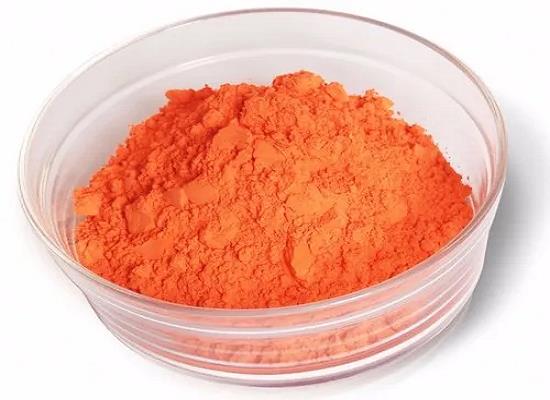4-Hydroxy-2,2,6,6-tetramethyl-piperidinooxy: A Promising Radical Scavenger for Preventing Radiation-Induced Alopecia
General Description
4-Hydroxy-2,2,6,6-tetramethyl-piperidinooxy is a radical scavenger with various pharmacological properties. It has been studied for its potential therapeutic uses, such as preventing radiation-induced alopecia. Topical application of 4-Hydroxy-2,2,6,6-tetramethyl-piperidinooxy has shown promising results in hair retention during radiation therapy. However, systemic use should be carefully considered due to its potential hemodynamic and neurotoxic side effects. In laboratory animal studies, 4-Hydroxy-2,2,6,6-tetramethyl-piperidinooxy has demonstrated antioxidant properties and protection against oxidative stress. It possesses SOD mimetic activity and can scavenge free radicals. While it shows potential as an antioxidant and radioprotective agent, further research is needed to fully understand its clinical applications and safety profile.

Figure 1. 4-Hydroxy-2,2,6,6-tetramethyl-piperidinooxy
Physical and Chemical Properties
4-Hydroxy-2,2,6,6-tetramethyl-piperidinooxy, also known as 4-hydroxy-TEMPO, is a radical scavenger and a member of the class of aminoxyls. It is a hydroxypiperidine and functionally related to TEMPO. This compound exhibits various pharmacological properties such as anti-inflammatory and analgesic effects, and is used as a catalyst, nephroprotective, neuroprotective, hepatoprotective, antineoplastic, and apoptosis-inducing agent. The physical properties of 4-Hydroxy-2,2,6,6-tetramethyl-piperidinooxy include a melting point range of 69-71°C, boiling point estimate of 302.58°C, density estimate of 1.0402, vapor pressure of 0.025Pa at 20℃, refractive index estimate of 1.4350, flash point of 146°C, and solubility of 1670g/L in water. The compound appears as crystals or crystalline powder with an orange color and has a pH of 8.2 in aqueous solution. 4-Hydroxy-2,2,6,6-tetramethyl-piperidinooxy is stable and incompatible with strong oxidizing agents. It has a pKa value of 5.07[at 20 ℃]. 4-Hydroxy-2,2,6,6-tetramethyl-piperidinooxy, a related compound, has been studied for the treatment of Anal Cancer. Topically applied piperidine nitroxide MTS-01, which is a hydrophilic piperidine nitroxide, has potential radioprotective and antioxidant activity. 1
Therapeutic Potential in Radiation-Induced Alopecia
4-Hydroxy-2,2,6,6-tetramethyl-piperidinooxy has shown therapeutic potential in the prevention of radiation-induced alopecia. In a phase Ib study, topical application of Tempol, a nitroxide radioprotector and a derivative of 4-Hydroxy-2,2,6,6-tetramethyl-piperidinooxy, was evaluated for its safety and efficacy in patients with brain metastases undergoing whole brain radiotherapy. Twelve patients with brain metastases were enrolled, and 4-Hydroxy-2,2,6,6-tetramethyl-piperidinooxy was applied topically to the scalp before and after each of the ten fractions of radiation therapy. Pharmacokinetic studies indicated minimal systemic absorption of 4-Hydroxy-2,2,6,6-tetramethyl-piperidinooxy. Adverse events, such as grade 1 and 2 hypoglycemia, forehead skin redness, dry scalp, and tingling sensation on the scalp, were mostly mild and transient. Interestingly, hair retention was observed, primarily at the base of the scalp where 4-Hydroxy-2,2,6,6-tetramethyl-piperidinooxy solution pooled after application. Subsequent use of gauze to hold the solution against the scalp resulted in full scalp hair retention in three out of the final five evaluated patients. These findings suggest a protective effect of 4-Hydroxy-2,2,6,6-tetramethyl-piperidinooxy against radiation-induced alopecia. Based on the positive results, a phase II study utilizing a gel formulation to enhance 4-Hydroxy-2,2,6,6-tetramethyl-piperidinooxy exposure on the scalp has been initiated. This study demonstrates the safety, tolerability, and potential efficacy of topical 4-Hydroxy-2,2,6,6-tetramethyl-piperidinooxy in preventing radiation-induced alopecia, providing promising prospects for further development in this therapeutic application. 2
Pharmacology and Toxicity
4-Hydroxy-2,2,6,6-tetramethyl-piperidinooxy is a stable nitroxide compound that has been extensively studied for its pharmacology and toxicity. In laboratory animal studies, it has shown antioxidant properties and protection against the toxicity of reactive oxygen species in vitro and in vivo. 4-Hydroxy-2,2,6,6-tetramethyl-piperidinooxy has been found to possess superoxide dismutase (SOD) mimetic activity, which contributes to its ability to scavenge free radicals and protect cells from oxidative stress. In acute exposure studies, 4-Hydroxy-2,2,6,6-tetramethyl-piperidinooxy has been shown to cause dose-related hypotension accompanied by reflex tachycardia and increased skin temperature. It has a potent vasodilative effect, confirmed through invasive hemodynamic monitoring. Another nitroxide compound, 3-carbamoyl-PROXYL (3-CP), did not affect blood pressure in laboratory animals. In subchronic or prechronic exposure studies, 4-Hydroxy-2,2,6,6-tetramethyl-piperidinooxy has been found to reduce arterial blood pressure when administered intravenously and is associated with seizure activity. Studies on neurotoxicity have indicated that 4-Hydroxy-2,2,6,6-tetramethyl-piperidinooxy is the least toxic among the three nitroxides examined. Repetitive and epileptiform activity were observed at higher concentrations of other nitroxides. Genotoxicity studies have generally shown that nitroxide compounds, including 4-Hydroxy-2,2,6,6-tetramethyl-piperidinooxy, possess low toxicity and are not mutagenic. However, marginal mutagenic effects were observed in one study, which used a generated toxic oxygen species. Overall, 4-Hydroxy-2,2,6,6-tetramethyl-piperidinooxy shows promising antioxidant and radioprotective effects in laboratory animal studies, but careful consideration should be given to its potential hemodynamic and neurotoxic side effects in systemic use. 3,4
Reference
1. 1-Piperidinyloxy, 4-hydroxy-2,2,6,6-tetramethyl-. National Center for Biotechnology Information, 2023, PubChem Compound Summary for CID 137994.
2. Metz JM, Smith D, Mick R, Lustig R, Mitchell J, Cherakuri M, Glatstein E, Hahn SM. A phase I study of topical Tempol for the prevention of alopecia induced by whole brain radiotherapy. Clin Cancer Res. 2004 Oct 1;10(19):6411-6417.
3. Hahn SM, Sullivan FJ, DeLuca AM, Bacher JD, Liebmann J, Krishna MC, Coffin D, Mitchell JB. Hemodynamic effect of the nitroxide superoxide dismutase mimics. Free Radic Biol Med. 1999 Sep;27(5-6):529-535.
4. Hahn SM, Krishna MC, DeLuca AM, Coffin D, Mitchell JB. Evaluation of the hydroxylamine Tempol-H as an in vivo radioprotector. Free Radic Biol Med. 2000 Mar 15;28(6):953-958.
Related articles And Qustion
See also
Lastest Price from 4-Hydroxy-2,2,6,6-tetramethyl-piperidinooxy manufacturers

US $1.00/KG2025-04-21
- CAS:
- 2226-96-2
- Min. Order:
- 1KG
- Purity:
- 99%
- Supply Ability:
- 10 mt

US $3.00/kg2025-04-21
- CAS:
- 2226-96-2
- Min. Order:
- 1 mkg
- Purity:
- 99.5%
- Supply Ability:
- 500mt




